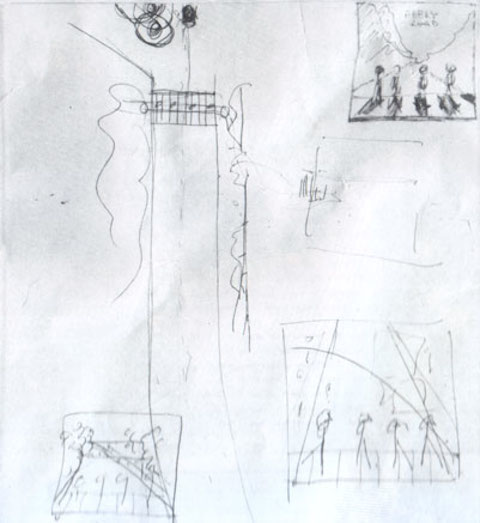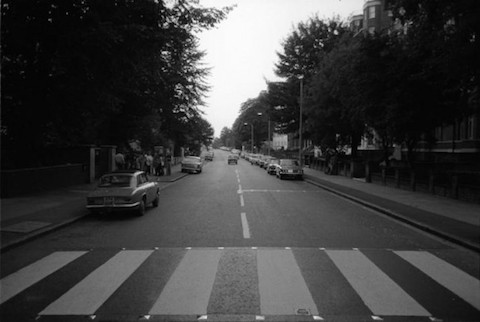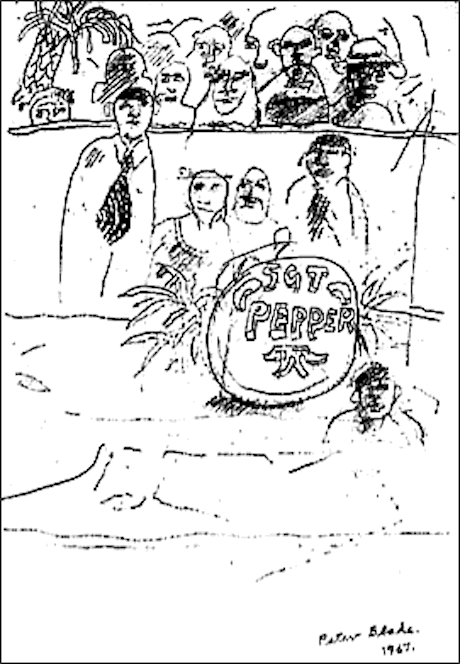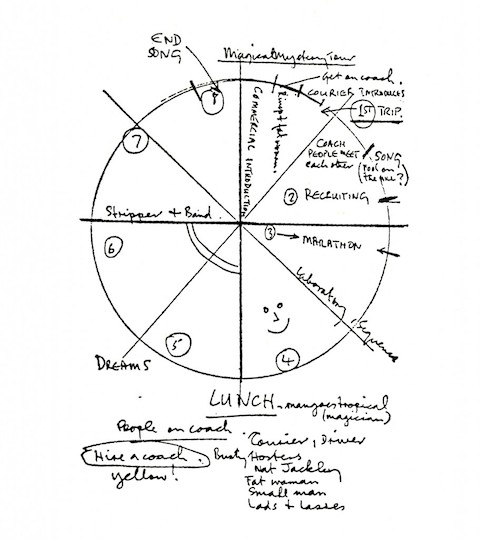
The website of Abbey Road studios has an EarthCam trained on the intersection of Abbey Road and Grove End Road, right outside its stately Georgian Townhouse. You can monitor the site all day and night if you like, and the prospect of doing so seems no crazier to me than indulging a fixation with Paul is dead conspiracies. It’s a magical place, as likely to inspire awe as blind obsession. Although it has recorded artists from Paul Robeson to Lady Gaga, the historic studio acquired its shrine status from one moment only—The Beatles final recorded album, Abbey Road, and its infamous cover shot.

Seeing the sausage of that cover made in the alternate takes posted at the Beatles Bible site (two of which have Paul wearing sandals) doesn’t necessarily dispel the mystique, but it does disabuse one of illusions of total spontaneity. Even more so does the drawing at the top, which Paul McCartney made for photographer Iain Macmillan, who had 10 minutes to get the handful of shots he captured with his Hasselblad. In the top right-hand corner, you can see a small drawing added by Macmillan which adds depth to McCartney’s rudimentary compositions. These sketches show McCartney and Macmillan carefully visualizing the symmetries, strides, and even shadows of the crosswalk photo. (See the landmark above, empty, in a photo taken that same day.)

Sketching out important shots like these is common practice. For example, above you can see Peter Blake’s 1967 outline for the Sgt. Pepper’s Lonely Hearts Club Band cover art. But the Abbey Road sketch is further evidence of McCartney’s guiding hand in The Beatles’ image-making. Of Sgt. Pepper’s, John Lennon went on record as saying of the concept that “Sgt Pepper is Paul.” In this case, McCartney’s idea for the cover was instrumental in Blake’s eventual design: “a presentation featuring a mayor and a corporation, with a floral clock and a selection of photographs of famous faces on the wall behind The Beatles.” McCartney circulated a list among the band members, asking them to list their choice of celebrities. Many of the suggested figures ended up on the cover.
Of their subsequent concept album, The Magical Mystery Tour, Ringo likewise claimed “it’s Paul’s idea really, he came up with this.” Whenever McCartney formulated his ideas—for album structures, cover designs, or movies—he says in this video (which we can’t embed, unfortunately) that he would “draw something out.” Above, see his conceptual map for the Magical Mystery Tour film (click to enlarge). It may only be a coincidence that it looks something like a dreamcatcher. Maybe it’s more of a pie chart. In any case, McCartney describes it in fairly matter-of-fact terms as “virtually a script” that allowed him to “focus his thoughts.”
Related Content:
Hear the Isolated Vocal Tracks for The Beatles’ Climactic 16-Minute Medley on Abbey Road
John, Paul and George Perform Dueling Guitar Solos on The Beatles’ Farewell Song (1969)
The Beatles: Unplugged Collects Acoustic Demos of White Album Songs (1968)
Josh Jones is a writer and musician based in Durham, NC. Follow him at @jdmagness



Great post. Just one question: Why do you call the Abbey Road cover shot “infamous”? Thanks!
In-famous is when you’re more than famous. This Abbey Road cover shot is not just famous, it’s in-famous.
Infamous is being famous for something considered bad or evil. E.G. Adolf Hitler is infamous.